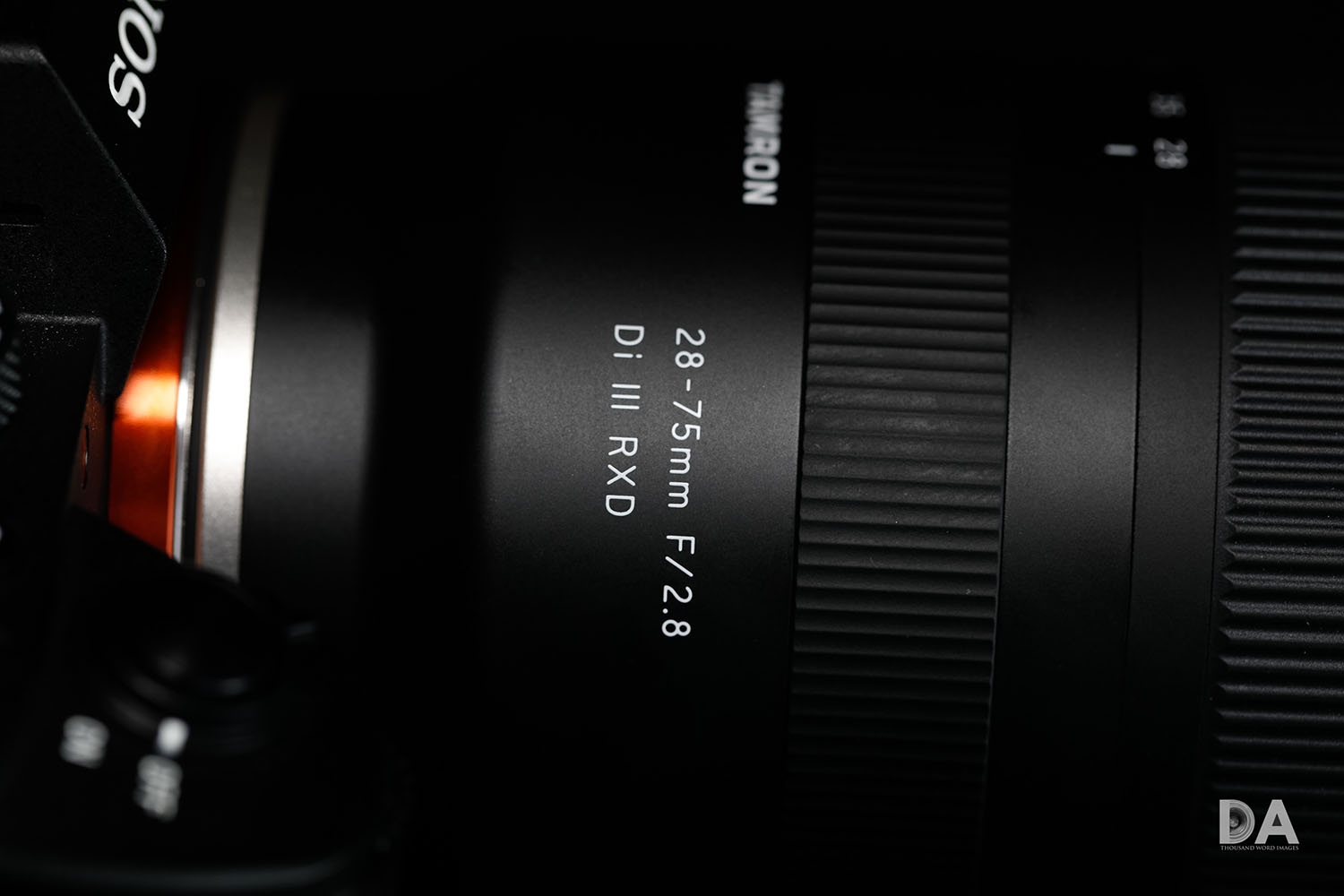Tamron 28-75mm F/2.8 RXD Review

Sony has been vying to steal some market share from Canon and Nikon for some time. While their innovation and impressive spec lists have been widely applauded, the Sony E mount has lacked a competitive lens selection. While Sony cameras like the A7R III and new A7 III are very competitively priced, the good quality Sony FE lenses tend to be more expensive than their Canon or Nikon counterparts.
This void is often filled by the third-party lens manufacturers. Aside from a few high-end Zeiss and a few lower-end Samyang/Rokinon lenses, there hasn’t been any serious third-party support of the FE mount. Fortunately, that is changing with both Sigma and Tamron releasing lenses for Sony FE. Of all the recently announced options, probably none is more important than the newly developed Tamron 28-75mm f/2.8 RXD (Model A036). The 28-75mm RXD that is licensed by Sony has the potential to be the “go-to” lens for several reasons.
One of the first reasons is price. The lens comes to market at a very reasonable $1,129.99 nicely filling the gap between the highly mediocre Sony FE 28-70mm f/3.5-5.6 and the excellent but exceptionally expensive Sony FE 24-70mm f/2.8 G Master. The Tamron 28-75mm RXD comes to market with a performance close to the more expensive lens.
The second reason is size. The 28-75mm RXD is designed from the ground-up for Sony FE resulting in a much more attractive size and weight for mirrorless A7 camera series than the Sigma ART lenses getting an FE retrofit. In fact, the Tamron lens is a much more natural fit on something like the A7R III or A7 III than most of the Sony zooms!
The third reason is performance. My tests of this lens (check out my website or YouTube channel for direct comparisons to the nearly 3x-as-expensive G Master lens) reveal that while in most areas the G Master is superior but not by a large margin. Many photographers will consider this a “90% of the performance for 36% of the price” proposition.
Build and Design
For those who envision mirrorless as being a more compact system, the Tamron 28-75mm RXD will be a breath of fresh air. The 28-75mm RXD is only 2.87” (73mm) in diameter, but is 4.64” (117.8mm) in length and has a very common 67mm front filter ring. It weighs in at a moderate 1.21 pounds (550g) which balances easily on bodies like the Sony A7 series where it will most often find a home.
The sleek lens barrel has a satin black finish interrupted only by the focus and zoom rings. The A036 employs mostly lightweight metals in the barrel, and includes premium features like weather sealing including a rear gasket and internal seals at 6 different spots according to this diagram from Tamron as well as an expensive fluorine coating on the front element.
The 28-75mm RXD has the requisite 9 rounded aperture blades which will enable round circular highlights even with the lens stopped down, the lens does suffer the fairly common deformation of circular shapes near the edge of the frame (they become more cat-eyed there). The lens also received Tamron’s BBAR coatings on elements to help reduce flare and improve contrast.
The lens comes with a standard petal-shaped lens hood that is ribbed on the interior to help keep stray light from bouncing around.
The wide, deeply ribbed zoom ring is towards the front of the lens and moves smoothly, with a single inner barrel extending a small amount when zoomed towards the telephoto end. There is no evidence of any wobble nor any inclination towards “zoom creep”. The friction/damping is just about right on this ring.
The manual focus ring is much slimmer and is closer to the lens mount. Like all mirrorless autofocusing lenses, the manual focus action is a “focus by wire” system where input on the manual focus ring is routed through the focus motor to change the focus. There is no mechanical coupling to the elements. I’ve actually been fairly happy with the implementation of “focus by wire” on this lens as well as many Sony lenses. I find it easy to refine focus with fairly good damping and the input lag a non-issue. If you are in MF or DMF focus modes, the camera will detect when focus input is made and will automatically magnify the image on the LCD or in the viewfinder to help you visually confirm correct focus. It works quite well unless you are focusing off-center. If that is the case, you are better off to click the focus magnify button and select the appropriate area before actually magnifying the image. The only real physical limitation is a lack of any kind of switch on the barrel for AF/MF. I prefer a physical button like the one on the Sony FE mount lenses as it saves going into the menu and allows you to make this change on the fly.
Tamron has developed a whole new autofocus system for this lens and have actually done a great job as the Rapid eXtra-silent stepping Drive (RXD) is everything a mirrorless autofocus system should be. It’s extremely fast, extremely silent and locks on quickly and confidently. It feels akin to Canon’s excellent Nano-USM technology in speed and silence.
As befits a truly native lens, all Sony focus technologies are supported, from focus modes to Eye AF to the Hybrid Phase Detect/Contrast AF focus that is Sony’s unique approach to autofocus. It supports continuous AF in all drive modes, including Hi+
My personal experience with the 28-75mm RXD and its autofocus was very positive. I had good success with things like Eye AF where I got roughly similar results to using the premium Sony 24-70mm f/2.8 G Master when shooting either portraits or using the lens in an event-type setting. Autofocus was very fast, silent, and accurate. I have very little to complain about based on what I actually experienced.
The only – very minor – complaint I could point to is that one or two cases I was trying to shoot a subject about four feet in front of me with a busy background beyond. The Tamron’s AF grabbed the background several times, while the G Master (I was shooting them side by side) more intuitively grabbed the foreground object. I was able to easily solve this problem either by bring the focus forward manually or touching the screen and switching to a Flexi-AF point for more precise focus.
While it may seem an unfair comparison to pit the A036 against the nearly 3x-as-expensive G Master lens, Tamron has few other natural competitors. Besides, the Tamron was able to hold its head up in this comparison anyway! It often delivered higher contrast and sometimes resolution in the center of the frame, particularly from 50-75mm while the edge performance lags slightly behind the G Master. The GM lens also sharpens up more when stopped down to smaller apertures, making it perhaps the better landscape lens. The difference between the two lenses for portrait and event work was hard to spot even with the images side by side.
It is important to remember that these lenses don’t have identical focal lengths. 24mm is much wider than 28mm, and is arguably more useful than the Tamron’s additional 5mm on the long end. Tamron elected to tackle a slightly easier focal range to engineer for, but it was probably a wise decision as it allows the lens to be a little more competitive where the lenses overlap.
Beyond resolution there is the component of optical performance that I like to call “rendering”, which includes things like bokeh, contrast, color rendition and the “look” of images. Image from the A036 had nice color and contrast on a global level. The bokeh is unique and has character, but as this is a pretty subjective measure so you’ll have to decide whether you like it or not. It has a unique outlining effect with some circular highlights that almost looks like it was penciled in. I prefer this to the “onion-bokeh” of some 24-70mm f/2.8 zooms, but it won’t be for everyone.
One area the Tamron actually bests the GM in a minor way is in its handling of chromatic aberrations. The GM shows a very faint amount of fringing in a few situations, while the Tamron is nearly completely neutral. This helps boost contrast and is part of the reason why the Tamron images have nice punch to them.
A unique feature is that the Tamron offers two different minimum focus distances and maximum magnification figures. A typical zoom lens has a single minimum focus distance and determines its maximum magnification based on the telephoto end. However, the Tamron 28-75mm RXD has two MFDs. One at the wide end, and another at the telephoto end. The telephoto end is an excellent, class leading MFD of 39cm (15.4″) and a resulting magnification of 0.25x (1:4 ratio). What is interesting, however, is that on the wide end (28mm) you can focus down to 19cm (7.5″) where you have an exceptional 0.34x magnification (1:3 ratio). Take a look at how much more magnified the subject is at the wide end MFD. This makes the lens even more valuable for travel or for wedding photographers, as you can get a “macro” type shots along with your standard photos.
In conclusion, the Tamron 28-75mm f/2.8 Di III RXD represents a very important lens both for Tamron and for Sony. Tamron has needed to venture into the mirrorless market, where it has only had one APS-C option for years. Positive reception of this lens will help position them to have strong sales of future lenses. But in many ways this lens is equally important for Sony, even though it will invariably cut into some G Master sales. The lack of competent and yet affordable lenses like this have really held a lot of people back from making the switch from Canon or Nikon. The 28-75mm RXD will undoubtedly be a “system seller”. The 28-75mm RXD is a “win-win” for both companies, and I found the Tamron to be that “everyday useful” kind of lens that I haven’t had in many Sony lenses…and even better that it comes at a reasonable price!
About the Author
Dustin Abbott is a full time pastor/part time photographer from Pembroke, Ontario who shoots professionally but primarily for capturing beauty and sharing it with others. www.dustinabbott.net

















